Research: Difference between revisions
| Line 115: | Line 115: | ||
{{-}} | {{-}} | ||
==2005== | ==2005== | ||
===[[Evolutionary dynamics on graphs]]=== | ===[[Evolutionary graph theory|Evolutionary dynamics on graphs]]=== | ||
[[Image:Cover Nature 2005.433.png|left|border|120px|link=Evolutionary | [[Image:Cover Nature 2005.433.png|left|border|120px|link=Evolutionary graph theory]] | ||
with Erez Lieberman & Martin Nowak (2005) ''Nature'' '''433''', 312-316 [http://dx.doi.org/10.1038/nature03204 doi: 10.1038/nature03204]. | with Erez Lieberman & Martin Nowak (2005) ''Nature'' '''433''', 312-316 [http://dx.doi.org/10.1038/nature03204 doi: 10.1038/nature03204]. | ||
| Line 123: | Line 123: | ||
{{-}} | {{-}} | ||
===[[Cooperation in structured populations|Models of cooperation based on the Prisoner's Dilemma and the Snowdrift game]]=== | ===[[Cooperation in structured populations|Models of cooperation based on the Prisoner's Dilemma and the Snowdrift game]]=== | ||
[[Image:Cover EcolLett 2005.8.png|left|border|120px|link=Cooperation in structured populations]] | [[Image:Cover EcolLett 2005.8.png|left|border|120px|link=Cooperation in structured populations]] | ||
Revision as of 15:33, 13 July 2016
| Publication year: |
|---|
The following list of selected publications features articles that explicitely refer to the EvoLudo simulator (previously known as VirtualLabs) or present results based on the simulation framework of the EvoLudo simulator. For a complete list of publications please visit my homepage.
2012
Stochastic differential equations for evolutionary dynamics with demographic noise and mutations
with Arne Traulsen & Jens-Christian Claussen, Phys. Rev. E 85 041901 doi: 10.1103/PhysRevE.85.041901.
Summary: Stochastic differential equations (SDE) provide a general framework to describe the evolutionary dynamics of an arbitrary number of types in finite populations. For large, but finite populations demographic noise is included without requiring explicit simulations. Instead, the population size only rescales the amplitude of the noise. Moreover, this framework admits the inclusion of mutations between different types, provided that mutation rates, \(\mu\), are not too small compared to the inverse population size \(1/N\). This ensures that all types are almost always represented in the population and that the occasional extinction of one type does not result in an extended absence of that type. However, for \(\mu N\ll1\) there are well established alternative approximations based on time scale separation. The excellent agreement with simulation based results is illustrated by a generic Rock-Scissors-Paper game with mutations for sufficiently large populations. In the absence of mutations the excellent agreement extends to small population sizes.
Evolutionary Games in Deme Structured, Finite Populations
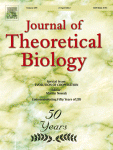
with Lorens Imhof, J. theor. Biol. 299 106-112 doi: 10.1016/j.jtbi.2011.06.010.
Summary: A fairly general model for the evolutionary dynamics in a sub-divided (or deme structured) population with migration and mutation is presented. The number and size of demes are finite and fixed. The fitness of each individual is determined by pairwise interactions with other members of the same deme. The dynamics within demes can be modeled according to a broad range of evolutionary processes. With a probability proportional to fitness, individuals migrate to another deme. Mutations occur randomly. In the limit of few migrations and even rarer mutations a simple analytic condition for selection to favor one strategic type over another is derived. In particular, the Pareto efficient type is favored when competition within demes is sufficiently weak. The general results are applied to the prisoner’s dilemma game and selected dynamics to discuss the conditions for cooperation to prevail.
2011
Pattern formation and chaos in spatial ecological public goods games
with Joe Yuichiro Wakano, J. theor. Biol. 268 30-38 doi:10.1016/j.jtbi.2010.09.036
Summary: Cooperators and defectors can coexist in ecological public goods games. When the game is played in two-dimensional continuous space, a reaction diffusion model produces highly irregular dynamics, in which cooperators and defectors survive in ever-changing configurations. The dynamics is related to the formation of Turing patterns, but the origin of the irregular dynamics is not well understood. This paper, presents a classification of the spatio-temporal dynamics based on the dispersion relation, which reveals that the spontaneous pattern formation can be attributed to the dynamical interplay between two linearly unstable modes: temporal instability arising from a Hopf-bifurcation and spatial instability arising from a Turing-bifurcation. Moreover, a detailed analysis of the highly irregular dynamics through power series, the break-down of symmetry, the maximum Lyapunov exponent, and the excitability of the reaction-term dynamics all support that the dynamics qualifies as spatio-temporal chaos. A particularly interesting type of chaotic dynamics, which was termed intermittent bursts, clearly demonstrates the effects of the two unstable modes where (local) periods of stasis alternate with rapid changes that may induce local extinction.
2010
Social learning promotes institutions for governing the commons

with Karl Sigmund, Hannelore De Silva & Arne Traulsen (2010) Nature 466, 861-863 doi: 10.1038/nature09203.
Summary: Theoretical and empirical research highlights the role of punishment in promoting collaborative efforts. However, both the emergence and the stability of costly punishment are problematic issues. It is not clear how punishers can invade a society of defectors by social learning or natural selection, or how second-order free-riders (who contribute to the joint effort but not to the sanctions) can be prevented from drifting into a coercion-based regime and subverting cooperation. Here we compare the prevailing model of peer-punishment with pool-punishment, which consists in committing resources, before the collaborative effort, to prepare sanctions against free-riders. Pool-punishment facilitates the sanctioning of second-order free-riders, because these are exposed even if everyone contributes to the common good. In the absence of such second-order punishment, peer-punishers do better than pool-punishers; but with second-order punishment, the situation is reversed. Efficiency is traded for stability. Neither other-regarding tendencies or preferences for reciprocity and equity, nor group selection or prescriptions from higher authorities, are necessary for the emergence and stability of rudimentary forms of sanctioning institutions regulating common pool resources and enforcing collaborative efforts.
2009
Spatial dynamics of ecological public goods

with Joe Yuichiro Wakano & Martin A. Nowak (2009) Proc. Natl. Acad. Sci. USA 106, 7910-7914 doi: 10.1073/pnas.0812644106.
Summary: The production, consumption and exploitation of common resources ranging from extra-cellular products in microorganisms to global issues of climate change refer to public goods interactions. Individuals can cooperate and sustain common resources at some cost or defect and exploit the resources without contributing. This generates a conflict of interest, which characterizes social dilemmas: individual selection favors defectors but for the community it is best if everybody cooperates. Traditional models of public goods do not take into account that benefits of the common resource enable cooperators to maintain higher population densities. This leads to a natural feedback between population dynamics and interaction group sizes as captured by `ecological public goods'. Here we show that the spatial evolutionary dynamics of ecological public goods in `reaction-diffusion' systems promotes cooperation based on different types of pattern formation processes. In spatial settings individuals can migrate (diffuse) in order to populate new territories. Slow diffusion of cooperators fosters aggregation in highly productive patches (activation), whereas fast diffusion enables defectors to readily locate and exploit these patches (inhibition). These antagonistic forces promote co-existence of cooperators and defectors in static or dynamic patterns, including spatial chaos of ever changing configurations. The local environment of cooperators and defectors is shaped by the production or consumption of common resources. Hence, diffusion induced self-organization into spatial patterns not only enhances cooperation but also provides simple mechanisms for the spontaneous generation of habitat diversity, which denotes a crucial determinant of the viability of ecological systems.
Exploration dynamics in evolutionary games
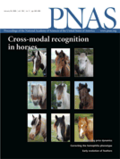
with Arne Traulsen, Hannelore Brandt, Martin A. Nowak & Karl Sigmund (2009) Proc. Natl. Acad. Sci. USA 106, 709-712 doi: 10.1073/pnas.0808450106.
Summary: Evolutionary game theory describes systems where individual success is based on the interaction with others. We consider a system in which players unconditionally imitate more successful strategies but sometimes also explore the available strategies at random. Most research has focused on how strategies spread via genetic reproduction or cultural imitation, but random exploration of the available set of strategies has received less attention so far. In genetic settings, the latter corresponds to mutations in the DNA, whereas in cultural evolution, it describes individuals experimenting with new behaviors. Genetic mutations typically occur with very small probabilities, but random exploration of available strategies in behavioral experiments is common. We term this phenomenon “exploration dynamics” to contrast it with the traditional focus on imitation. As an illustrative example of the emerging evolutionary dynamics, we consider a public goods game with cooperators and defectors and add punishers and the option to abstain from the enterprise in further scenarios. For small mutation rates, cooperation (and punishment) is possible only if interactions are voluntary, whereas moderate mutation rates can lead to high levels of cooperation even in compulsory public goods games.
2008
Ecological public goods games: Cooperation and bifurcation

with Joe Yuichiro Wakano & Michael Doebeli (2008) Theor. Pop. Biol. 73, 257-263 doi: 10.1016/j.tpb.2007.11.007.
Summary: The Public Goods Game is one of the most popular models for studying the origin and maintenance of cooperation. Hauert et al. (2006, Proc. R. Soc. Lond. B 273, 2565) have introduced the Ecological Public Goods Game by viewing the payoffs from the evolutionary game as birth rates in a population dynamic model. This results in a feedback between ecological and evolutionary dynamics: if defectors are prevalent, birth rates are low and population densities decline, which leads to smaller interaction groups for the Public Goods game, and hence to dominance of cooperators, with a concomitant increase in birth rates and population densities. This feedback can lead to stable co-existence between cooperators and defectors. Here we provide a detailed analysis of the dynamics of the Ecological Public Goods Game, showing that the model exhibits various types of bifurcations, including supercritical Hopf bifurcations, which result in stable limit cycles, and hence in oscillatory co-existence of cooperators and defectors. These results show that including population dynamics in evolutionary games can have important consequences for the evolutionary dynamics of cooperation.
2007
Via freedom to coercion: the emergence of costly punishment

with Arne Traulsen, Hannelore Brandt, Martin A. Nowak & Karl Sigmund (2007) Science 316, 1905-1907 doi: 10.1126/science.1141588.
Summary: In human societies, cooperative behaviour in joint enterprises is often enforced through institutions that impose sanctions on defectors. Many experiments on so-called public goods games have shown that in the absence of such institutions, individuals are willing to punish defectors, even at a cost to themselves. Theoretical models confirm that social norms prescribing the punishment of uncooperative behaviour are stable: once established, they prevent dissident minorities from spreading. But how can such costly punishing behaviour gain a foothold in the population? A surprisingly simple model shows that if individuals have the option to stand aside and abstain from the joint endeavour, this paves the way for the emergence and establishment of cooperative behaviour based on the punishment of defectors. Paradoxically, the freedom to withdraw from the common enterprise leads to enforcement of social norms. Joint enterprises which are compulsory rather than voluntary are less likely to lead to cooperation.
2006
Evolutionary games and population dynamics: maintenance of cooperation in public goods games

with Miranda Holmes & Michael Doebeli (2006) Proc. R. Soc. London B 273, 2565-2570 doi: 10.1098/rspb.2006.3600.
Summary: The emergence and abundance of cooperation in nature poses a tenacious and challenging puzzle to evolutionary biology. Traditional approaches to studying the problem of cooperation assume constant population sizes and thus neglect the ecology of the interacting individuals. Here, we incorporate ecological dynamics into evolutionary games and reveal a new mechanism for maintaining cooperation. In public goods games, cooperation can gain a foothold if the population density depends on the average population payoff. Decreasing population densities, due to defection leading to small payoffs, results in smaller interaction group sizes in which cooperation can be favoured. This feedback between ecological dynamics and game dynamics can generate stable coexistence of cooperators and defectors in public goods games. Our model represents natural extension of replicator dynamics to populations of varying densities.
A simple rule for the evolution of cooperation on graphs and social networks

with Hisashi Ohtsuki, Erez Lieberman & Martin Nowak (2006) Nature 441, 502-505 doi: 10.1038/nature04605.
Summary: Cooperation represents a fundamental aspect of all biological systems and forms the basis for many levels of biological organization ranging from single cells to groups of animals and human society. It is well known that in unstructured populations, natural selection favours defectors over cooperators. However, the outcome can be quite different in structured populations and on graphs. This takes into account that who-meets-whom is not random, but determined by spatial relationships or social networks. Here we present a surprisingly simple rule for cooperation: natural selection favours cooperation, if the benefit of the altruistic act, b, divided by the cost, c, exceeds the average number of neighbours, k. This represents a good approximation for all graphs that we have analysed (including cycles, spatial lattices, random regular graphs, random graphs and scale-free networks). Therefore, cooperation can evolve as a consequence of 'social viscosity' even in the absence of reputation effects or strategic complexity.
Punishing and abstaining for public goods
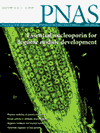
with Hannelore Brandt & Karl Sigmund (2006) Proc. Natl. Acad. Sci. USA 103, 495-497 doi: 10.1073/pnas.0507229103.
Summary: The evolution of cooperation within sizable groups of nonrelated humans offers many challenges for our understanding. Current research has highlighted two factors boosting cooperation in public goods interactions, namely, costly punishment of defectors and the option to abstain from the joint enterprise. A recent modeling approach has suggested that the autarkic option acts as a catalyzer for the ultimate fixation of altruistic punishment. We present an alternative, more microeconomically based model that yields a bistable outcome instead. Evolutionary dynamics can lead either to a Nash equilibrium of punishing and nonpunishing cooperators or to an oscillating state without punishers.
Synergy and discounting of cooperation in social dilemmas

with Franziska Michor, Martin Nowak & Michael Doebeli (2006) J. theor. Biol. 239, 195-202, Special Issue in Memory of John Maynard Smith doi: 10.1016/j.jtbi.2005.08.040.
Summary: The emergence and maintainance of cooperation by natural selection is an enduring conundrum in evolutionary biology, which has been studied using a variety of game theoretical models such as the prisoner's dilemma or the snowdrift game. All these games represent a social dilemma, where cooperators provide a benefit to the group at some cost, while defectors exploit the group by reaping the benefits without bearing the costs of cooperation. Using the concepts of discounting and synergy for describing the accumulation of benefits provided by several cooperators, we recover not only all the traditional scenarios as special cases but also the four basic scenarios of evolutionary dynamics given by (i) dominating defection, (ii) co-existence of defectors and cooperators, (iii) dominating cooperation and (iv) bi-stability, in which cooperators and defectors cannot invade each other. Generically, for groups of three or more interacting individuals further, more complex, dynamics can occur. Our framework provides the first unifying approach to model cooperation in different kinds of social dilemmas.
Spatial effects in social dilemmas

(2006) J. theor. Biol. 240, 627-636 doi: 10.1016/j.jtbi.2005.10.024.
Summary: Based on synergistic or discounted accumulation of cooperative benefits a unifying theoretical framework to study cooperation in social dilemmas was recently introduced that encompasses all games that have traditionally been studied separately such as the prisoner's dilemma, the snowdrift game, public goods games and many more (Hauert et al. (2006) J. Theor. Biol. 239, 195-202). Within this framework we investigate the effects of spatial structure with limited local interactions on the evolutionary fate of cooperators and defectors. The quantitative effects of space turn out to be quite sensitive to the underlying microscopic update mechanisms but, more general, we demonstrate that in prisoner's dilemma type interactions spatial structure benefits cooperation - although the parameter range is quite limited - whereas in snowdrift type interactions spatial structure may be beneficial too, but often turns out to be detrimental to cooperation.
2005
Evolutionary dynamics on graphs

with Erez Lieberman & Martin Nowak (2005) Nature 433, 312-316 doi: 10.1038/nature03204.
Summary: Evolutionary dynamics have been traditionally studied in the context of homogeneous or spatially extended populations. Here we generalize population structure by arranging individuals on a graph. We determine the fixation probability of mutants, and characterize those graphs whose fixation behaviour is identical to that of a homogeneous population as described by the Moran process. However, some graphs act as suppressors and others as amplifiers of selection. It is even possible to find graphs that guarantee the fixation of any advantageous mutant. We also study frequency-dependent selection and show that the outcome of evolutionary games can depend entirely on the structure of the underlying graph. Evolutionary graph theory has many fascinating applications ranging from ecology to multicellular organization, and economics.
Models of cooperation based on the Prisoner's Dilemma and the Snowdrift game

with Michael Doebeli (2005) Ecology Letters 8 (7) 748-766 doi: 10.1111/j.1461-0248.2005.00773.x.
Summary: Understanding the evolution of cooperation through natural selection is a core problem in biology. Here, we review game theoretic models of cooperation that are based on two simple two-person games: the Prisoner's Dilemma, and the Snowdrift game. Both games have two strategies, to cooperate and to defect, and both games are social dilemmas. In social dilemmas, cooperation is prone to exploitation by defectors, and the average payoff in populations at evolutionary equilibrium is lower than in cooperator populations. The difference between the games is that cooperation is not maintained in the Prisoner's Dilemma, but persists in the Snowdrift game at intermediate frequencies. As a consequence, insights gained from studying extensions of the two games differ substantially. We review the most salient results obtained from extensions such as iteration, spatial structure, continuously variable cooperative investments, and multi-person interactions. Bridging the gap between theoretical and empirical research is one of the main challenges for future studies of cooperation, and we conclude by pointing out a number of promising natural systems in which the theory can be tested experimentally.
2004
The Evolutionary Origin of Cooperators and Defectors

with Michael Doebeli and Timothy Killingback (2004) Science 306, 859-862 doi: 10.1126/science.1101456.
Summary: Coexistence of cooperators and defectors is common in nature, yet the evolutionary origin of such social diversification is unclear. Many models have been studied based on the assumption that benefits of cooperative acts only accrue to others. Here we analyze the Continuous Snowdrift game, in which cooperative investments are costly, but yield benefits to others as well as to the cooperator. Adaptive dynamics of investment levels often results in evolutionary diversification from initially uniform populations into a stable state in which cooperators making large investments coexist with defectors who invest very little. Thus, when individuals benefit from their own actions, large asymmetries in cooperative investments can evolve.
Spatial Structure Often Inhibits the Evolution of Cooperation in the Snowdrift Game

with Michael Doebeli (2004) Nature 428, 643-646 doi: 10.1038/nature02360.
Summary: Based on spatial extensions of the Prisoner’s Dilemma, it is widely accepted that spatial structure promotes the evolution of cooperation. However, no such general predictions can be made for the effects of spatial structure in the Snowdrift game. In unstructured Snowdrift games, intermediate levels of cooperation persist but spatial structure generally reduces the proportion of cooperators. In particular, spatial structure eliminates cooperation if the cost-to-benefit ratio of cooperation is high. In summary, our results caution against the common belief that spatial structure is necessarily beneficial for cooperative behaviour.
2002
Volunteering as Red Queen Mechanism for Cooperation in Public Goods Games

with Silvia De Monte, Josef Hofbauer and Karl Sigmund (2002) Science 296 1129-1132 doi: 10.1126/science.1070582.
Summary: The evolution of cooperation among unrelated individuals is one of the fundamental problems in biology and social sciences. Reciprocal altruism fails to provide a solution if interactions are not repeated often enough or groups are too large. In voluntary Public Goods interactions, cooperators and defectors coexist. This result holds under very diverse assumptions on population structure and adaptation mechanisms, leading usually not to an equilibrium but to an unending cycle of adjustments (a Red Queen type of evolution). Thus, voluntary participation offers an escape hatch out of some social traps. Cooperation can subsist in sizable groups even if interactions are not repeated, defectors remain anonymous, players have no memory, and assortment is purely random.
Phase Transitions and Volunteering in Spatial Public Goods Games

with György Szabó (2002) Physical Review Letters 89 (11) 118101 doi: 10.1103/PhysRevLett.89.118101.
Summary: Voluntary participation provides a simple yet effective mechanism to promote cooperation in Public Goods games. This natural extension leads to "Rock-Scissors-Paper"-type cyclic dominance of the three strategies, cooperate, defect, and loner. In spatial settings with players arranged on a regular lattice, this results in interesting dynamically properties and intriguing spatio-temporal patterns. In particular, variations of the value of the public good leads to transitions between one-, two-, and three-strategy states which either are in the class of directed percolation or show interesting analogies to Ising-type models. Although volunteering is incapable of stabilizing cooperation, it efficiently prevents successful spreading of selfish behavior.
Prisoner's Dilemma and Public Goods Games in Different Geometries: Compulsory Versus Voluntary Interactions
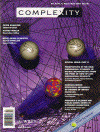
with György Szabó (2002) Complexity 8 (4) 31-38 doi: 10.1002/cplx.10092.
Summary: To study the evolution of cooperation among unrelated individuals two models have attracted most attention: the Prisoner's Dilemma for pairwise interactions and the public goods game for group interactions. The two games share many features as demonstrated by the close linkage of their cores. In spatially structured systems with individuals arranged on a lattice we investigate effects of group size and lattice geometry on the success of cooperators and defectors in compulsory and voluntary interactions. The geometry (square versus honeycomb), i.e. the connectivity turns out to have surprisingly pronounced and robust effects on the fate of cooperators. As expected, it becomes increasingly difficult to promote cooperation in sizable groups but voluntary participation significantly lowers the threshold for persistent cooperative behavior. In fact, this effect is more pronounced for larger groups.
Effects of Space in 2×2 games
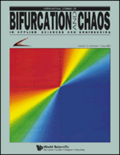
(2002) Int. Journal of Bifurcation and Chaos 12 1531-1548 doi: 10.1142/S0218127402005273.
Summary: Effects of spatial extension on the equilibrium frequency of cooperators and defectors in 2×2 games are compared to well mixed populations. Often spatial extension is capable of promoting cooperative behavior e.g. in the Prisoner's Dilemma. For the Hawk-Dove game, spatial extension may lead to both, increases of the hawk- as well as the dove strategy. The outcome subtly depends on the parameters as well as on the degree of stochasticity in the different update rules. The results are almost independent of the update rule of the lattice but increasing stochasticity for the update rules of the players results in equilibrium frequencies more closer to the mean field description.
2001
Reward and punishment

with Karl Sigmund & Martin A. Nowak (2001) Proc. Natl. Acad. Sci. USA 98 10757-10762 doi: 10.1073/pnas.161155698.
Summary: Minigames capturing the essence of Public Goods experiments show that even in the absence of rationality assumptions, both punishment and reward will fail to bring about prosocial behavior. This result holds in particular for the well-known Ultimatum Game, which emerges as a special case. But reputation can induce fairness and cooperation in populations adapting through learning or imitation. Indeed, the inclusion of reputation effects in the corresponding dynamical models leads to the evolution of economically productive behavior, with agents contributing to the public good and either punishing those who do not or rewarding those who do. Reward and punishment correspond to two types of bifurcation with intriguing complementarity. The analysis suggests that reputation is essential for fostering social behavior among selfish agents, and that it is considerably more effective with punishment than with reward.